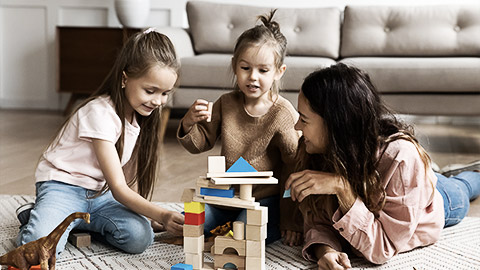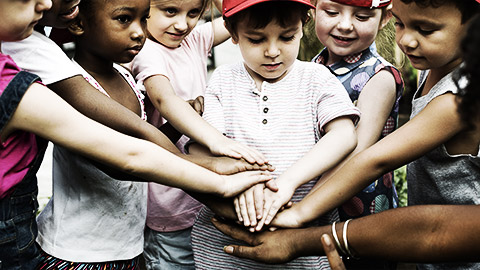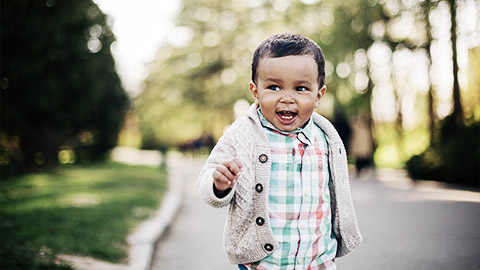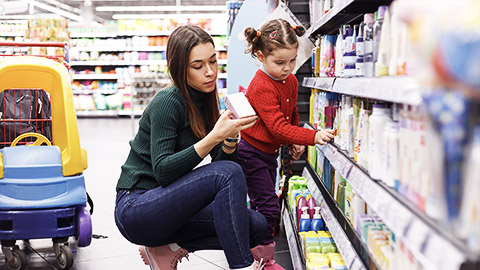The word Te Whāriki means 'woven mat' in Māori.
The Ministry of Education's Te Whāriki Information and resources about Te Whāriki, the curriculum for early learning.Te Whāriki envisages kaiako in early learning settings working in partnership with parents, whānau and community to realise this vision.
For those of you who have completed ECE level 3 with us at NZMA, or have been working in the industry, you will already be familiar with Te Whāriki, the NZ curriculum for early childhood education in NZ. If you are starting with us directly into level 4, then please spend some time reading the Te Whāriki resource before continuing.
We will be closely using and referencing the Te Whāriki resource for activities and assessments, so make sure that you have access to either the PDF version (online or printed) or the online version.

| PDF version | Download |
| Online version | tewhariki.tki.org.nz |
Activity - Watch and learn
Start by watching the following webinar at the Ministry of Education's website about Te Whāriki.
Instructions:
- Watch: Webinar 1 – The full promise of Te Whāriki
- Pause the video at appropriate times to take notes and process the learning, applying it to your own situation
- Create a document for your thoughts:
- In your own words, express what is the full promise of Te Whāriki for our tamariki and communities.
- Write down at least five key points, that you found interesting and why.
- Write down three actions you are now inspired to use while working with tamariki.
The curriculum is described in terms of principles, strands, goals and learning outcomes.
| PRINCIPLES | GOALS |
|---|---|
| The principles describe four fundamental expectations of all ECE providers in New Zealand. These principles are the foundations of curriculum decision-making and a guide for every aspect of pedagogy and practice. | The goals are for kaiako. They describe characteristics of facilitating environments and pedagogies that are consistent with the principles and that will support children’s learning and development across the strands of the curriculum. |
| STRANDS | LEARNING OUTCOMES |
| The strands describe five areas of learning and development, in which the focus is on supporting children to develop the capabilities they need as confident and competent learners. | The learning outcomes are broad statements of valued learning. They are designed to inform curriculum planning and evaluation, and to support the assessment of children’s progress. |

We are going to be looking into the principles, goals, and strands of Te Whāriki that we introduced you to in the previous topic, and how they enrich the learning experience of our tamariki at the different stages of their journey with us in their early years — infant, toddler, and young child.
Three Stages of Child development in Early Childhood
Te Whāriki holds the promise that all children will be empowered to learn with and alongside others by engaging in experiences that have meaning for them. This requires kaiako to actively respond to the strengths, interests, abilities and needs of each child and, at times, provide them with additional support in relation to learning, behaviour, development or communication.
Let’s look at what each of those stages means in regard to the child and their growing interests and capabilities at each stage.
| INFANTS | TODDLERS | YOUNG CHILD |
|---|---|---|
|
Infants are learning quickly and depend on adults to respond to their individual care needs. Through caregiving practices such as those for feeding and changing (sometimes referred to as ‘caregiving rituals’), infants are learning to trust other people and that they are worthy of love. Recognising their rights as children, kaiako are respectful of infants and, where appropriate, enable their agency. |
Toddlers are developing their identities as independent learners. They may be starting ECE for the first time or transitioning between or within settings. They are discovering how to navigate the expectations they encounter in different contexts. Their desire to explore and know their world, to increase their independence and to have greater control can be supported by familiar adults who know and understand them. |
Young children have increasing capacity for language and inquiry and for understanding other points of view. They are becoming much more aware of cultural expectations, understanding that different cultures have different expectations and that what is appropriate in one context may not be appropriate in another. |
| Growing interests and capabilities: | ||
|
|
|
Activities - Child development
This first quiz will help solidify the understanding you are gaining about the expectations and needs at three stages of development: infants, toddlers, and young children.
Interests and capabilities

Smith, 2007[In Te Whāriki] ...children are valued as active learners who choose, plan, and challenge. This stimulates a climate of reciprocity, 'listening' to children (even if they cannot speak), observing how their feelings, curiosity, interest, and knowlege are engaged in their early childhood environments, and encouraging them to make a contribution to their own learning.
| Empowerment | Whakamana |
|---|---|
| Holistic development | Kotahitanga |
| Family and community | Whānau tangata |
| Relationships | Ngā Hononga |
Activities – Understanding the principles of Te Whāriki
- Turn and learn
- Paraphrase
- Read through the Te Whāriki document (PDF).
- Create a document describing each of the four principles in your own words.
- Create a digital resource
Create an online poster, PowerPoint or short video to explain the principles of Te Whāriki to a new parent enrolling their child in your service.
The information you provide must show your understanding of each of the principles and how you embody them in your day-to-day work life. Be brief and to the point, using pictures and keywords. Too many words might confuse a parent who is new to Te Whāriki.
- Create a journal post
Include the work you did for #2 and #3 above and publish it so others can see it. Then review the posts of others and provide respectful feedback. You may be inspired by how other people have interpreted the information.
- Create and discover learning experiences and relate them to Te Whāriki
After you review other people's posts, download this template and complete it with activities that you find from talking to people, online resources, ideas of your own, etc. Use it for your own resource for the assessments and in your own work with tamariki.
| Mana Atua | Wellbeing |
|---|---|
| Mana Whenua | Belonging |
| Mana Tangata | Contribution |
| Mana Reo | Communication |
| Mana Aotūro | Exploration |
As discussed earlier, each of the strands of Te Whāriki are made up of goals and learning outcomes that lead to the evidence of learning and development of the children in your care.
GOAL
The goals in each strand describe characteristics of ECE environments and pedagogies that are conducive to learning and development. The goals are for kaiako, who are responsible for the curriculum in their setting.
LEARNING OUTCOME
The learning outcomes in each strand are broad statements that encompass valued knowledge, skills, attitudes, and dispositions that children develop over time. They are designed to inform curriculum planning and evaluation and support assessment of children’s progress.
Strands of Te Whāriki are well documented on Pages 26 – 50 of Te Whāriki and go into substantial detail about each strand and what it means for you and the children in your care.
Each of the strands gives examples of practices that promote the learning outcomes of the strand and examples of how this is delivered at the different stages of child development.
Wellbeing ǁ Mana Atua

The health and wellbeing of the child are protected and nurtured.
Ko tēnei te whakatipuranga o te tamaiti i roto i tōna oranga nui, i runga hoki i tōna mana motuhake, mana atuatanga.
| Goals | Learning Outcomes | Evidence of Learning and Development |
|---|---|---|
| Children experience an environment where: | Over time and with guidance and encouragement, children become increasingly capable of: | These outcomes will be observed as learning in progress when, for example, children demonstrate: |
|
|
|
|
|
|
|
|
Belonging ǁ Mana Whenua

Children and their families feel a sense of belonging.
Ko te whakatipuranga tēnei o te mana ki te whenua, te mana tūrangawaewae, me te mana toi whenua o te tangata.
| Goals | Learning Outcomes | Evidence of Learning and Development |
|---|---|---|
| Children experience an environment where: | Over time and with guidance and encouragement, children become increasingly capable of: | These outcomes will be observed as learning in progress when, for example, children demonstrate: |
|
|
|
|
|
|
|
|
|
|
|
Contribution ǁ Mana Tangata

Opportunities for learning are equitable, and each child’s contribution is valued.
Ko te whakatipuranga tēnei o te kiritau tangata i roto i te mokopuna kia tū māia ai ia ki te manaaki, ki te tuku whakaaro ki te ao.
| Goals | Learning Outcomes | Evidence of Learning and Development |
|---|---|---|
| Children experience an environment where: | Over time and with guidance and encouragement, children become increasingly capable of: | These outcomes will be observed as learning in progress when, for example, children demonstrate: |
|
|
|
|
|
|
|
|
Communication ǁ Mana Reo

The languages and symbols of children’s own and other cultures are promoted and protected.
Ko te whakatipuranga tēnei o te reo. Mā roto i tēnei ka tipu te mana tangata me te oranga nui.
| Goals | Learning Outcomes | Evidence of Learning and Development |
|---|---|---|
| Children experience an environment where: | Over time and with guidance and encouragement, children become increasingly capable of: | These outcomes will be observed as learning in progress when, for example, children demonstrate: |
|
|
|
|
|
|
|
|
|
|
|
Explorationǁ Mana Aotūroa

The child learns through active exploration of the environment.
Ko te whakatipuranga tēnei o te mana rangahau, me ngā mātauranga katoa e pā ana ki te aotūroa me te taiao.
| Goals | Learning Outcomes | Evidence of Learning and Development |
|---|---|---|
| Children experience an environment where: | Over time and with guidance and encouragement, children become increasingly capable of: | These outcomes will be observed as learning in progress when, for example, children demonstrate: |
|
|
|
|
|
|
|
|
|
|
|
This image provides a visual representation of the interwoven strands and principles of Te Whāriki
Activities - Strands of Te Whāriki
- Read
Read through the detailed overview of each strand above. For additional information, you will find a more in-depth explanation on pages 26-50 of the Te Whāriki resource. - Paraphrase and add learning activities
After you have read the material about the strand, use this template to describe in your own words what each strand means. Also, please supply two learning activities for each of the learning age groups — infants, toddlers, and young children. - Journal
When you have completed the template, create a journal post and upload your work. Take a look at the work of others and place respectful feedback for your peers.
The theories and ideas of Te Whāriki set a framework for a healthy environment for tamariki and the people who care for them. See if you can answer these questions about the principles and strands.
Take this 12 question quiz and test your knowledge of Te Whāriki.
